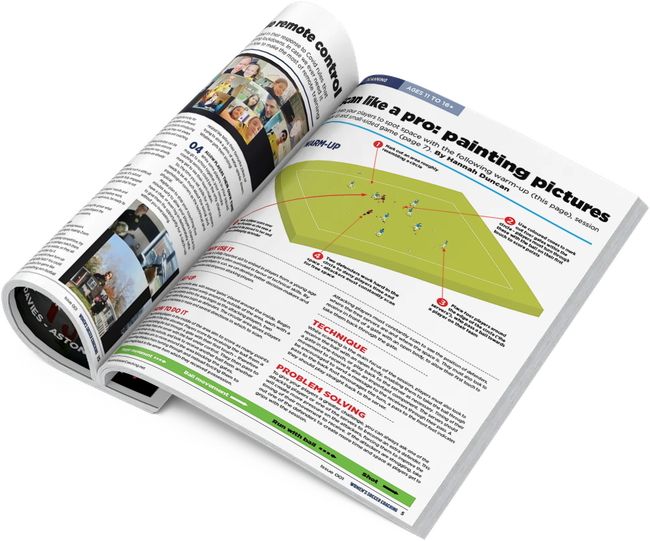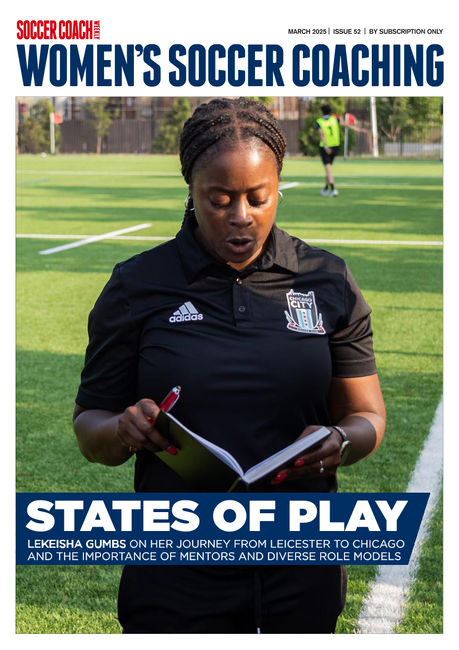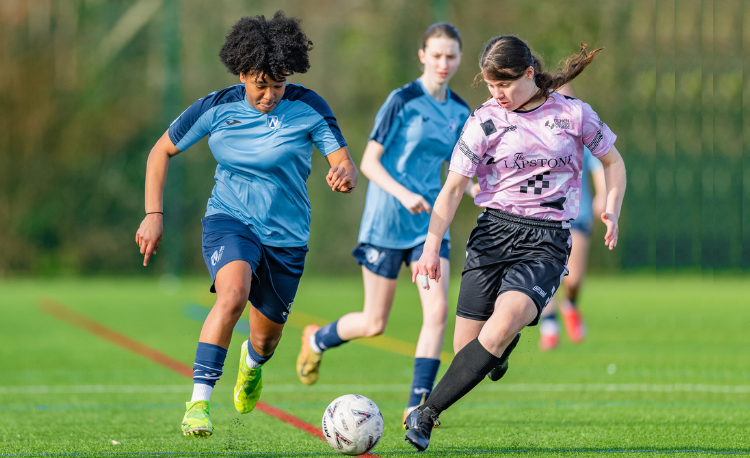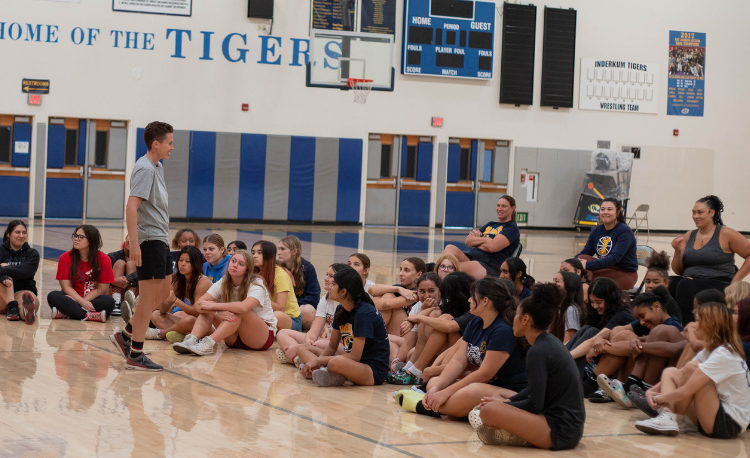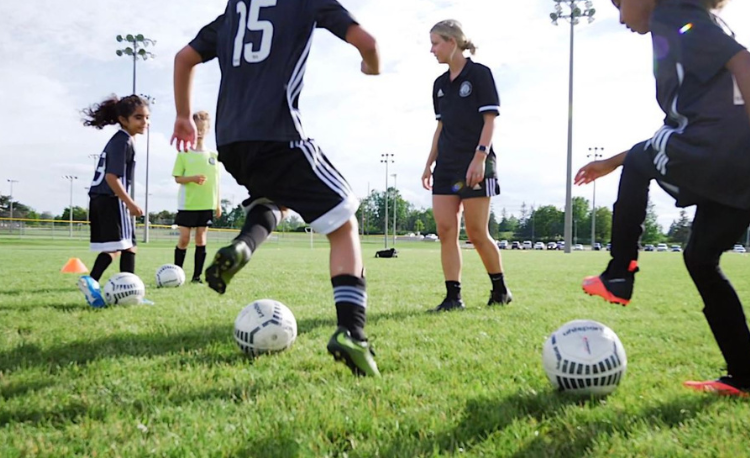You are viewing
2 of your 3 free articles
The gender gap
Coaching Adviceby Dave Francis
Boys are like caged animals, while girls listen more, says Dave Francis. Here are his tips for male coaches new to working in the female game...
I have been a coach for close to 20 years now and been fortunate enough to work with male and female players.
Lessons have been learned from both - more so, perhaps, on the female side, where I don’t have the previous experience from my younger years to fall back on.
There are a lot of subtle differences in the way they play the game, which also has an impact on how I coach them.
As a male working with females, these are challenges that we need to understand and find appropriate solutions to.
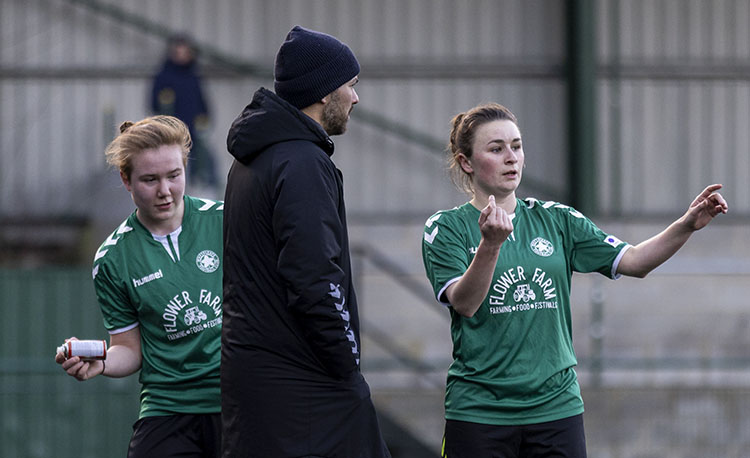
Female players will tend to listen more to information and want to help others more than male players, says Dave Francis (Picture: Glenn Alcock Photography)
Body changes
In 2020, the Chelsea Women's head coach Emma Hayes announced her team were to set individual training plans to fall in line with the menstrual cycle of her players.
She was rightfully lauded, as this has been a game changer in women’s soccer. Personally, it has helped me better understand some of the physical challenges that females face in sport.
I recall coaching a U12 girls’ team in North Carolina, when one of my players asked to go to the bathroom.
Shortly afterwards, she came out in tears, talking of stomach pain and asking to go home. I heard from her parents the following day that she was experiencing period pain for the first time.
For me, this highlights the need to have open bathrooms at every girls’ practice and game, as well as understanding that fatigue - or what is perceived as “a lack of effort” - often has more to it.
"Female players are six times more likely to suffer an ACL injury than male players..."Additionally, due to the physical changes in girls during puberty, data suggests that female players are six times more likely to suffer an anterior cruciate ligament (ACL) injury than male players.
One study in 1999 showed females land differently to men when performing jumping actions, placing greater stress on the knee joints.
Further research suggests the way hips grow in females forces more weight into the joint when changing direction.
Again, this is something I was blissfully unaware of until I started dedicating my coaching to the female game.
Appropriate warm-ups - that include stretching and strengthening the muscles and joints around the knee - are a must.
Another area that needs careful consideration is the demonstration of a practice or technique, especially when they require physical contact, such as hold-up play.
In my view, using the arm to hold off an opponent is vital to having success in this area. Of course, demonstrating this requires a level of physical contact that female players may not feel comfortable with from a male figure.
If you can't ask two team-mates to demonstrate on your command - and have to show yourself - ask permission to make any physical contact and ensure the arm doesn’t move into any inappropriate position.
Related Files
WSC-017-the-gender-gap.pdfPDF, 1.3 MB

Male coaches should be aware of the physiological changes in girls at different ages, particularly at the start of puberty
Embrace the team spirit
I was asked in a podcast interview about the difference between coaching boys and girls. My answer was that boys want to do everything quickly whereas girls want to do everything properly.
Boys are like caged animals just waiting for the door to be lifted – as soon as the ball is rolling, they are off. Girls will tend to listen to information, make it work and help their teammates if they are struggling.
This is obviously a generalisation and not set in stone for everyone – I have coached boys who are 100% focused on implementing the coaching points delivered and slowing things down to become good at them, and I have coached girls who want to move at 100mph, regardless of the success they have in the task that is set.
In my experience, however, the generalisation is more likely.
Boys also tend to play with a lot of ego. They want to be the superstar and do everything themselves, imagining they are Mo Salah taking on five players before scoring.
In contrast, girls seem to embrace the team mentality, happy to share the ball by passing more, almost to the point of preferring that someone else has the ball.
This was highlighted to me by a talented girl I coached at U11s, who told me she preferred getting assists to scoring.
Similarly, my current U10s will get a ball out when they arrive and start passing to each other, without any influence from me. They have done this since they were U8s. In contrast, my boys’ team are smashing shots at the goal...
These observations point to the social side of the four-corner model having a huge impact on the motivations of girls to play.
In fact, I ask each team I coach at the start of the season to tell me a reason why they play, with the most common answer in the girls’ teams being “to be with my friends”. This has been the case since 2011.
For my U10s team, I try and give them five minutes of free time, usually in the form of an arrival activity, which gives them a chance to socialise.
"Boys want to do everything quickly, girls want to do everything properly..."The activities that follow are a 1v1-style ball mastery activity in a close space so that a competitive element occurs and the girls still get to talk.
We follow that up with an opposed activity with groups of two or more, giving them that sense of togetherness, and, finally, a game to show all that they have learned.
I have also given the girls the chance in tournaments to select the starting line-up, give team talks and decide the substitution rotations.
Not only has this developed their in-game communication but they have also shown how they can make decisions as a group in fairness to everyone.
Many boys’ coaches I know wince at the thought of doing this.
Mind the humour
The biggest challenge I have had to face is reigning in parts of my personality.
My humour is naturally sarcastic and dry - with boys, this has been misunderstood in the past. Working with girls and young women, it’s a potential minefield.
It’s something I have had to really work on, building relationships with players first and then keeping the humour silly in nature.
Some of the more experienced players in my women’s team are likely to give as good as they get - and I always prefer them to make the first joke before my sarcastic side comes out.
I also make sure I am happy to mock myself and allow jokes at my expense should I make a mistake.
Showing fallibility as a coach is an underrated skill and one that further builds a trusting relationship with players. It also shows that any joke I make isn’t personal. Creating the right environment for females to play football is arguably the biggest challenge if you’re a male coach.
Take the time to learn about their needs and structure things accordingly and you’ll see the development that you’re after.
Newsletter Sign Up
Newsletter Sign Up
Discover the simple way to become a more effective, more successful soccer coach
In a recent survey 89% of subscribers said Women's Soccer Coaching makes them more confident, 91% said Women's Soccer Coaching makes them a more effective coach and 93% said Women's Soccer Coaching makes them more inspired.
*includes 3 coaching manuals
Get Inspired
All the latest techniques and approaches
Women's Soccer Coaching offers proven and easy to use soccer drills, coaching sessions, practice plans, small-sided games, warm-ups, training tips and advice.
We've been at the cutting edge of soccer coaching since we launched Soccer Coach Weekly in 2007, creating resources for the grassroots youth coach, following best practice from around the world and insights from the professional game.
